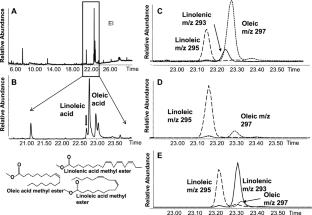Insects in several orders deposit marking pheromones following oviposition. In addition to preventing the female from visiting the same site again, the pheromone also signals the presence of eggs to conspecific females. This form of chemical marking is particularly prevalent in species which oviposit on discrete hosts with limited resources available for developing larvae. The pepper weevil is a major pest of cultivated pepper throughout the southern United States, Mexico and the Caribbean. The weevil deposits eggs singly in a cavity chewed in flower buds and small fruits and caps these cavities with a plug derived from an anal secretion. The deterrent was found to be located in this oviposition plug and comprised of volatile and contact-acting components. Plug volatiles were collected by inducing oviposition into Teflon tape sachets containing pepper leaves and collecting volatiles from plugs laid on the tape surface. Of the two major components observed by GC/MS analyses, only acetophenone elicited a behavioral response by the female weevil in small arena and wind tunnel assays. Investigations of the oviposition plug matrix identified several free unsaturated and saturated fatty acids as major constituents of the plug which was in stark contrast to pepper tissue and seeds that contained only trace levels of free fatty acids and a distinctly different total fatty acid composition. The combined free fatty acids as well as acetophenone tested singly gave no significant reduction in oviposition while a plug-mimicking blend of unsaturated fatty acids tested in combination with acetophenone as artificial ‘plug spots,’ decreased oviposition on treated peppers by up to 75%. We propose that the combination of volatile and contact acting marking components improves oviposition site selection efficiency by pepper weevils on discrete hosts.



